Jellyfish Season
From December to March/April of the lunar calendar, it’s jellyfish harvesting season. For those born near the sea, jellyfish are a gift from the ocean. This brainless, heartless seafood has a very special texture. When cooked properly, while eating it, it feels as cool as jelly, as smooth as velvet, and as crunchy as seaweed.
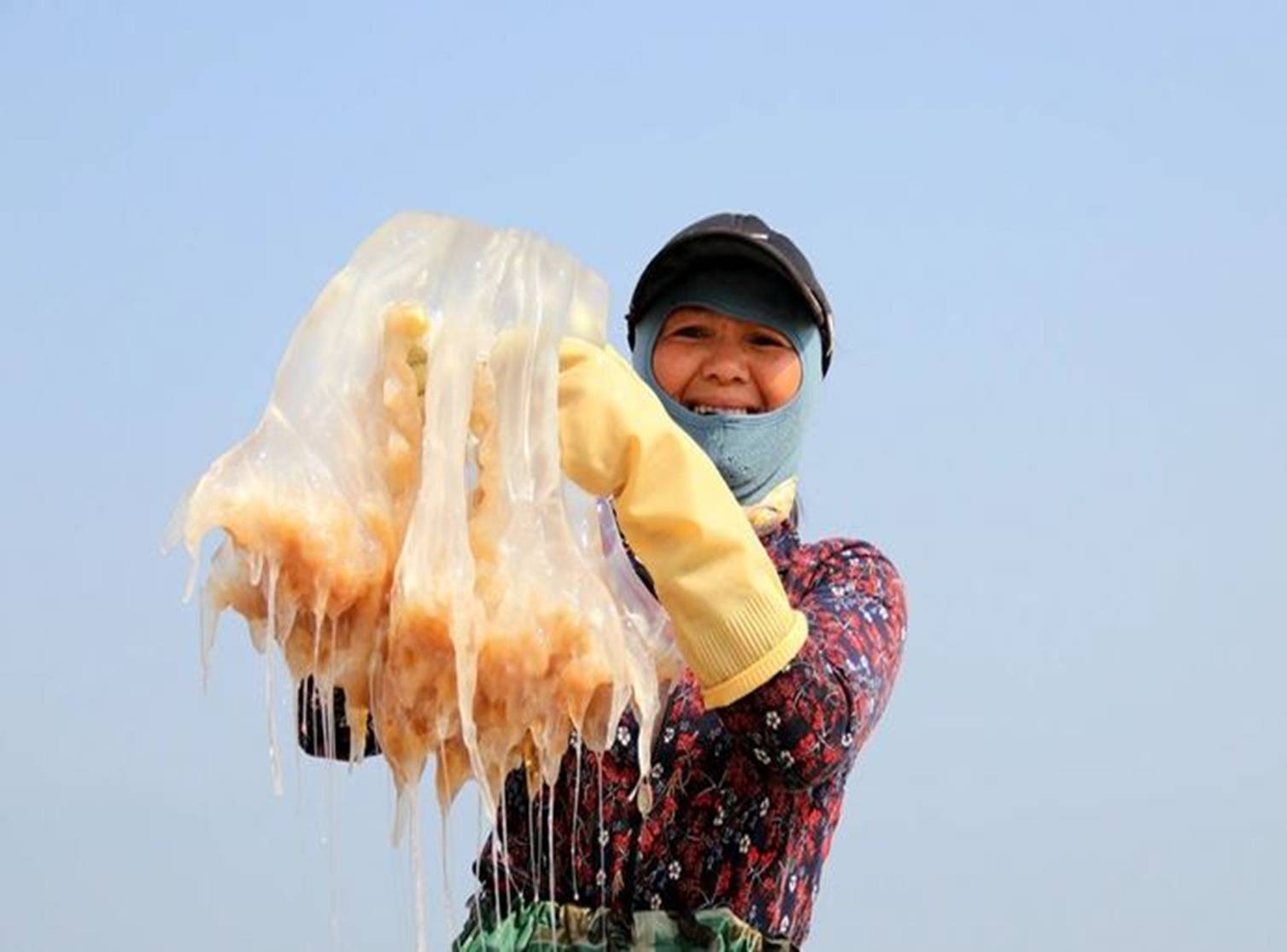
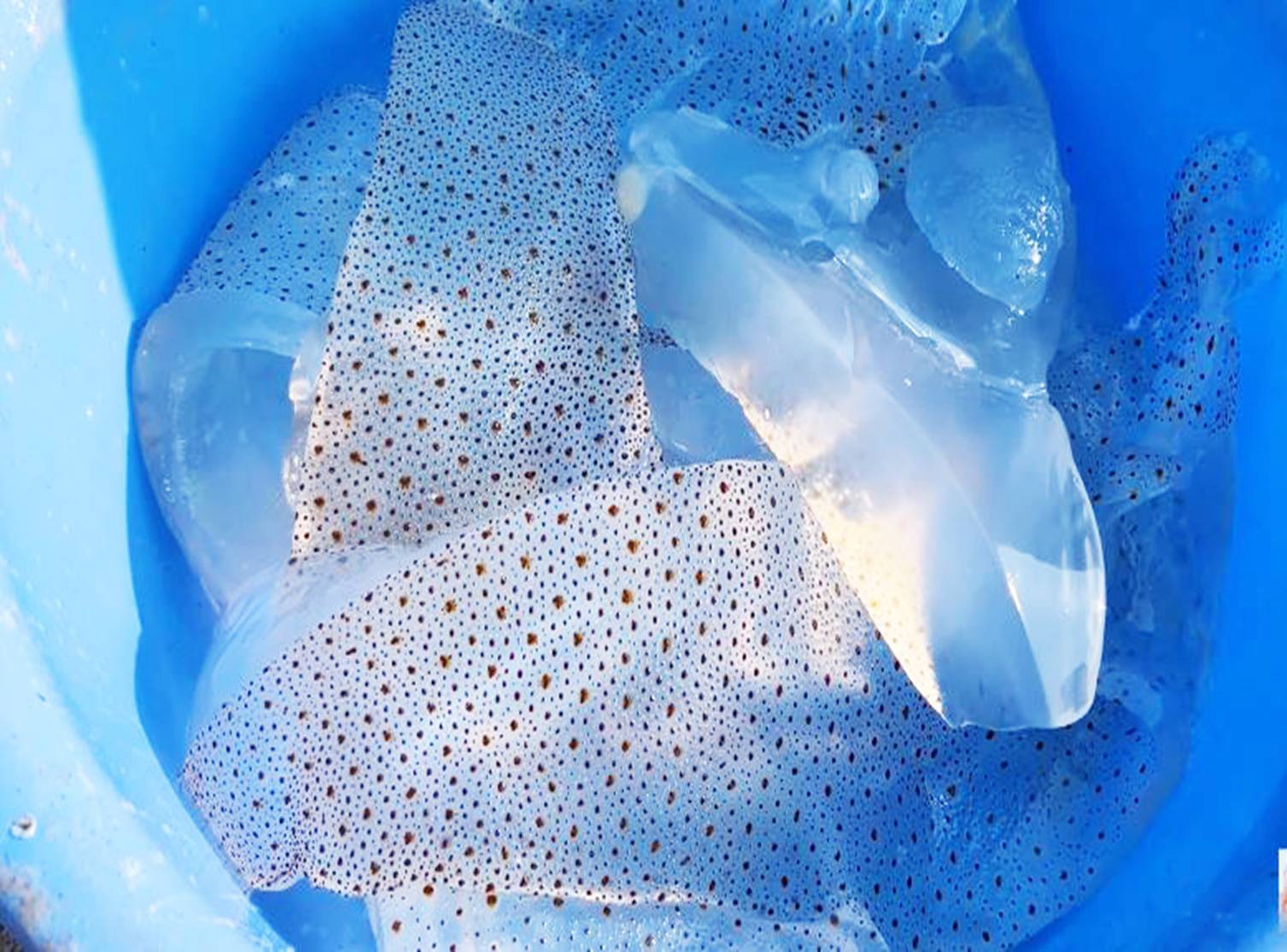
Jellyfish when they are first caught and when their intestines have been removed, sand has been sifted, and they have been washed in seawater
City dwellers eat jellyfish when they are finished with the salting process, sometimes red, yellow, or even a clear white with natural red and brown spots. It’s rare to see a jellyfish in its original state after being harvested. The jellyfish processing procedure is also a mystery to many.
Therefore, when the harvesting and preliminary processing of jellyfish by the fishermen of Ky Ninh fishing village (Ky Anh, Ha Tinh) was revealed, many people were surprised. Jellyfish harvested from the sea are taken by the villagers to a nearby sandy beach for preliminary processing.
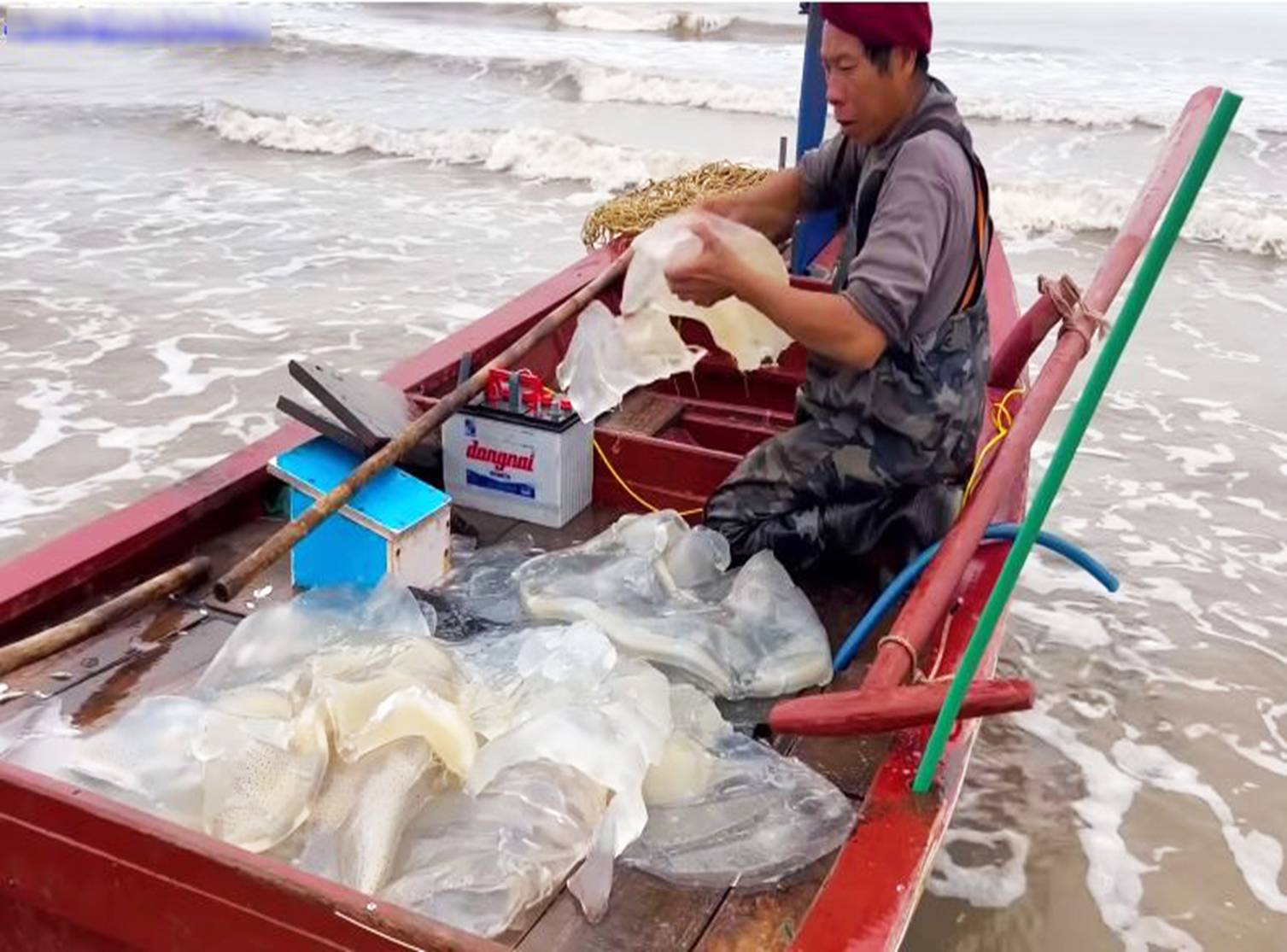
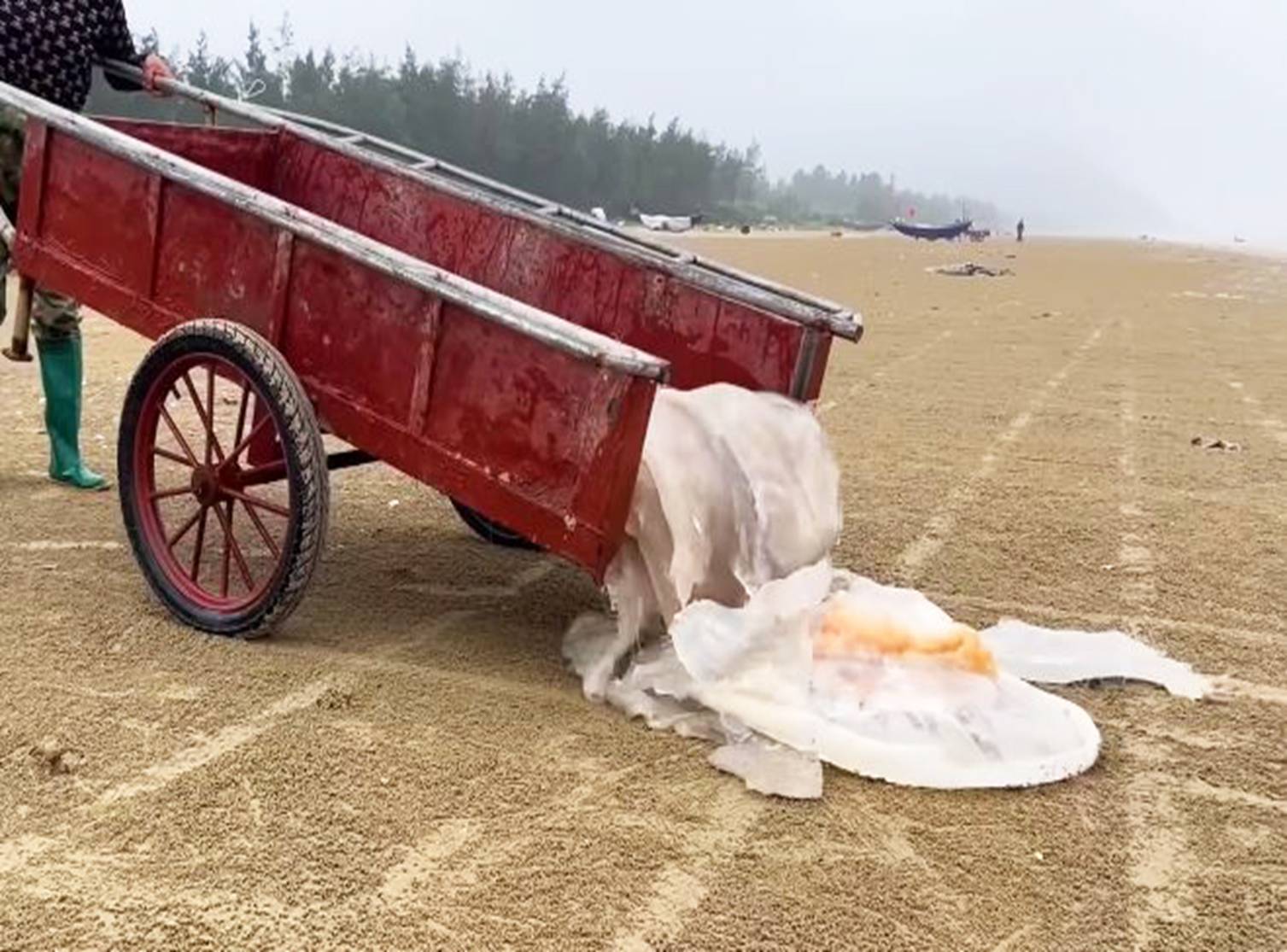
Transparent, fresh jellyfish are processed by fishermen right on the sandy beach
The fishermen place the jellyfish on the ground and use sharp knives to remove the intestines, taking only the body and legs of the jellyfish. Each piece of jellyfish, soft as jelly, is cut “sweetly,” littering the sandy beach.
Mr. Ha, a fisherman with generations of experience in jellyfish, revealed that this year the purchase price of jellyfish at sea is about 900 VND/kg. On average, each jellyfish weighs about 20 kg when it is first caught, which is the best size for jellyfish. Smaller ones weigh about 15 kg, while larger ones can weigh about 30 kg.
According to Mr. Ha, during the jellyfish season, a boat can catch about 2 tons of jellyfish per day if they are lucky. Jellyfish that are caught need to be processed immediately to ensure their freshness and taste, which is why those who sell them often wait all day at sea to welcome the boats back.
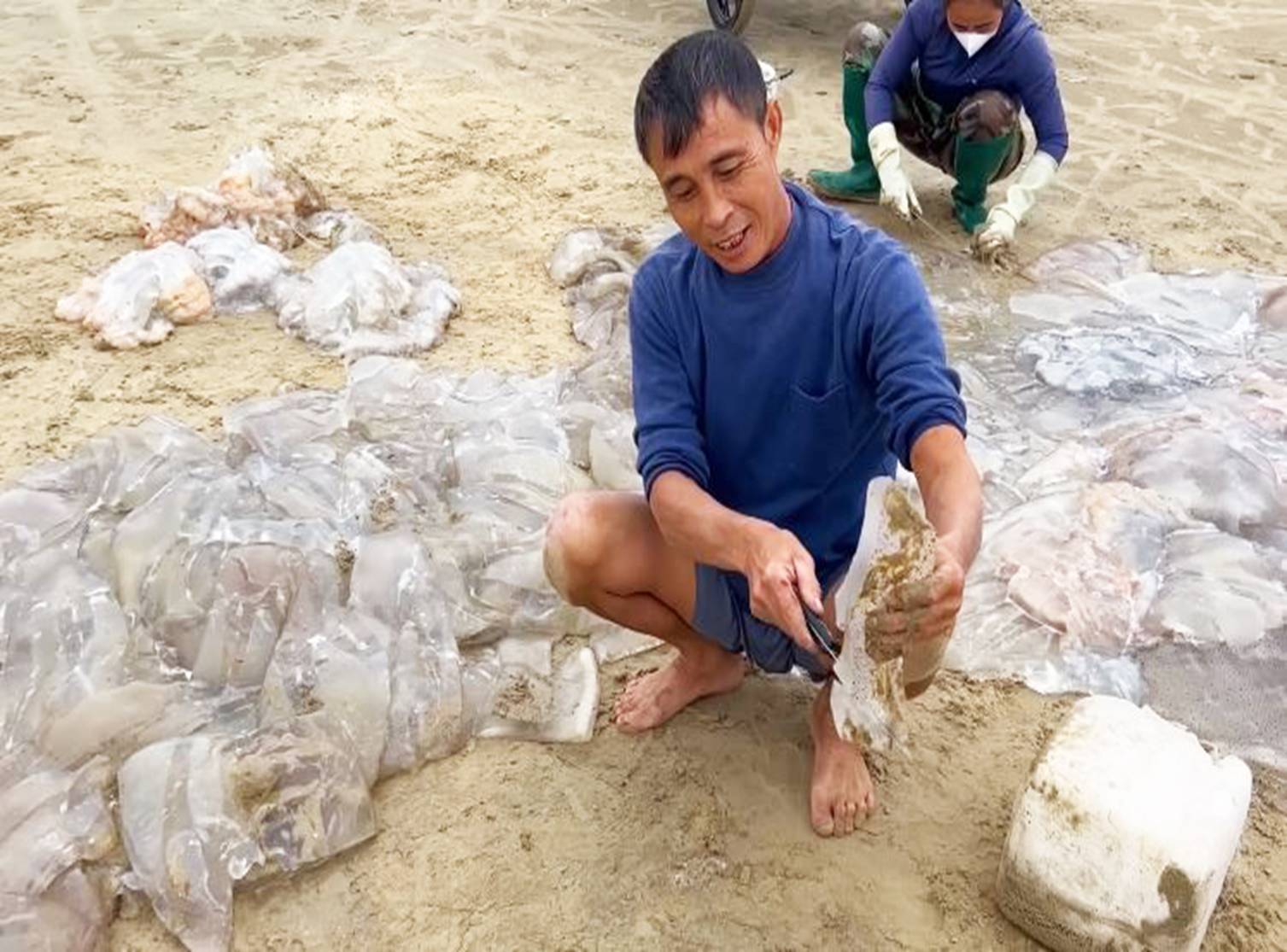
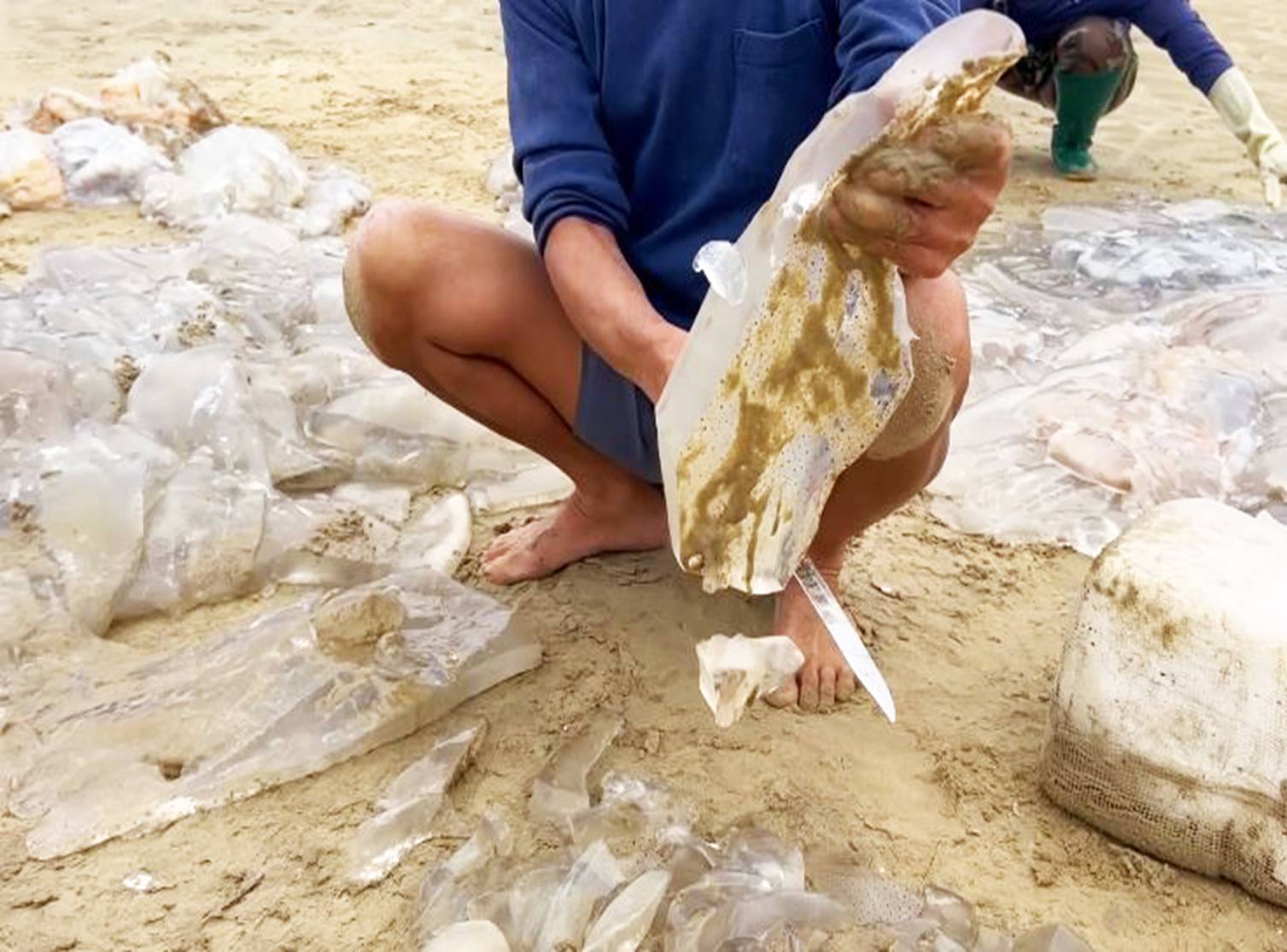
Mr. Ha cuts the jellyfish into small pieces instead of leaving them whole like fishermen in Thai Binh and Hai Phong
Like Mr. Ha, other fishermen cut the jellyfish into small pieces and bury them in the sand. They also “marinate” the jellyfish with sea sand, mixing each transparent piece of jellyfish in the sand. He explained: “Jellyfish have a slightly toxic substance, and touching it with bare skin can cause itching. If it is not processed carefully, it can even ‘eat’ into the skin.”
Those who don’t know may criticize us for mixing jellyfish with sand, but this is the traditional way of doing it in coastal areas. It must be done this way to make it edible.
Rubbing the jellyfish in the sea sand removes the slimy, toxic layer from the jellyfish’s body. Rubbing it in the sand for about an hour causes the jellyfish to release all of its slime and shrink in size.
In factories, alum is added to the jellyfish, and a machine is used to remove the slime. However, we do it manually, following the methods passed down through generations. We just throw it on the beach and rub it in the sand. If we don’t do this, it will be too fishy and won’t be edible.

Before taking it home to salt with various astringent leaves, the fishermen marinate the jellyfish with sea sand
After the “earthen salt” has set for a sufficient amount of time, the jellyfish slices are taken out to sea and washed again with seawater to thoroughly clean them. At this point, the fishermen take them home to marinate them in the water of the lau leaf, which is a type of leaf with astringent properties that is picked from the forest.
After marinating in the lau leaf water for 1-2 days, the jellyfish shrinks and loses its fishy and slimy taste. It is then washed again and marinated in the water of the dung or vang leaf, which are also types of leaves with astringent properties. After marinating for another 1-2 days, the jellyfish is ready to be salted, crispy, and golden yellow, just like in Central Vietnam.
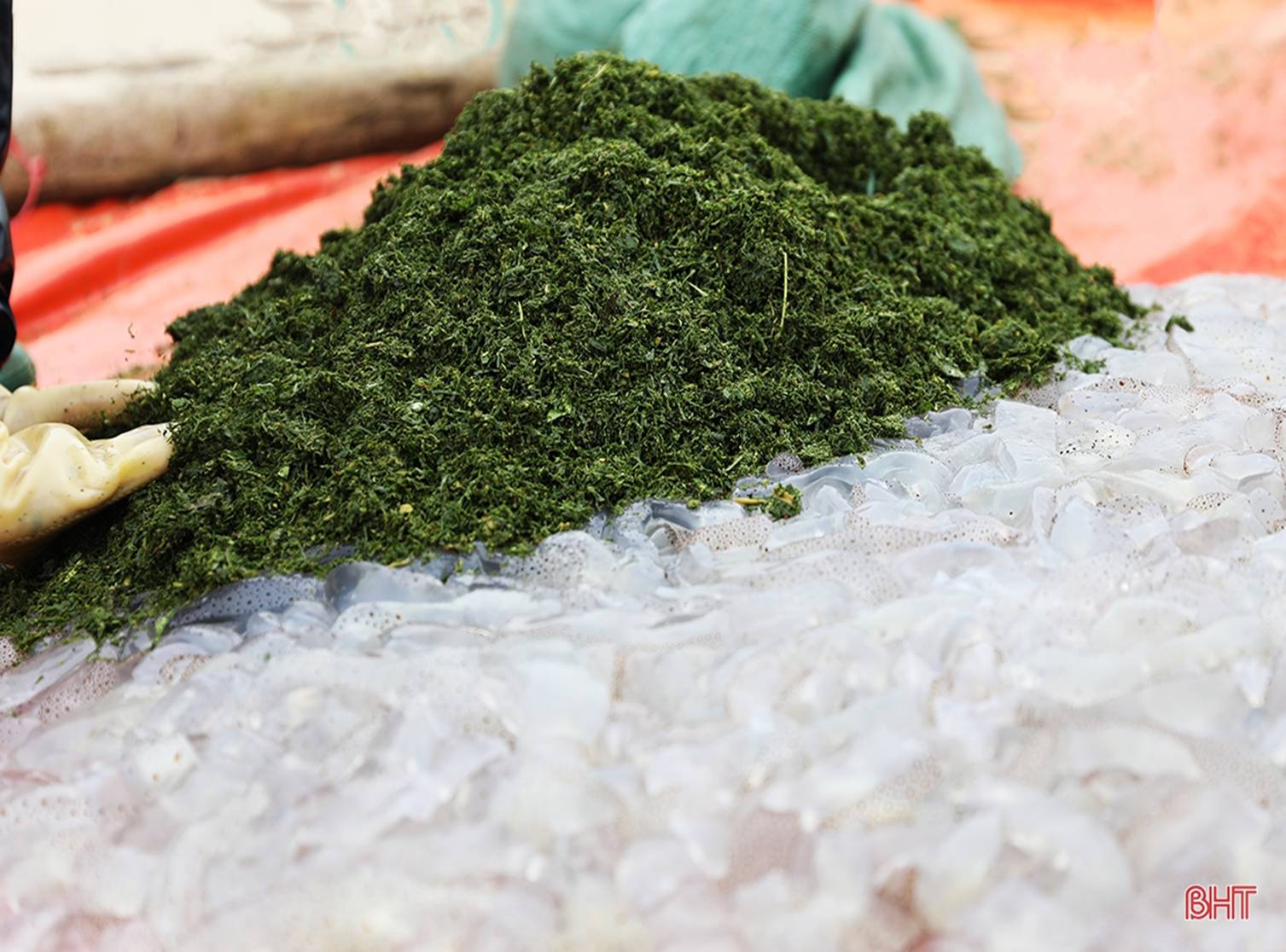
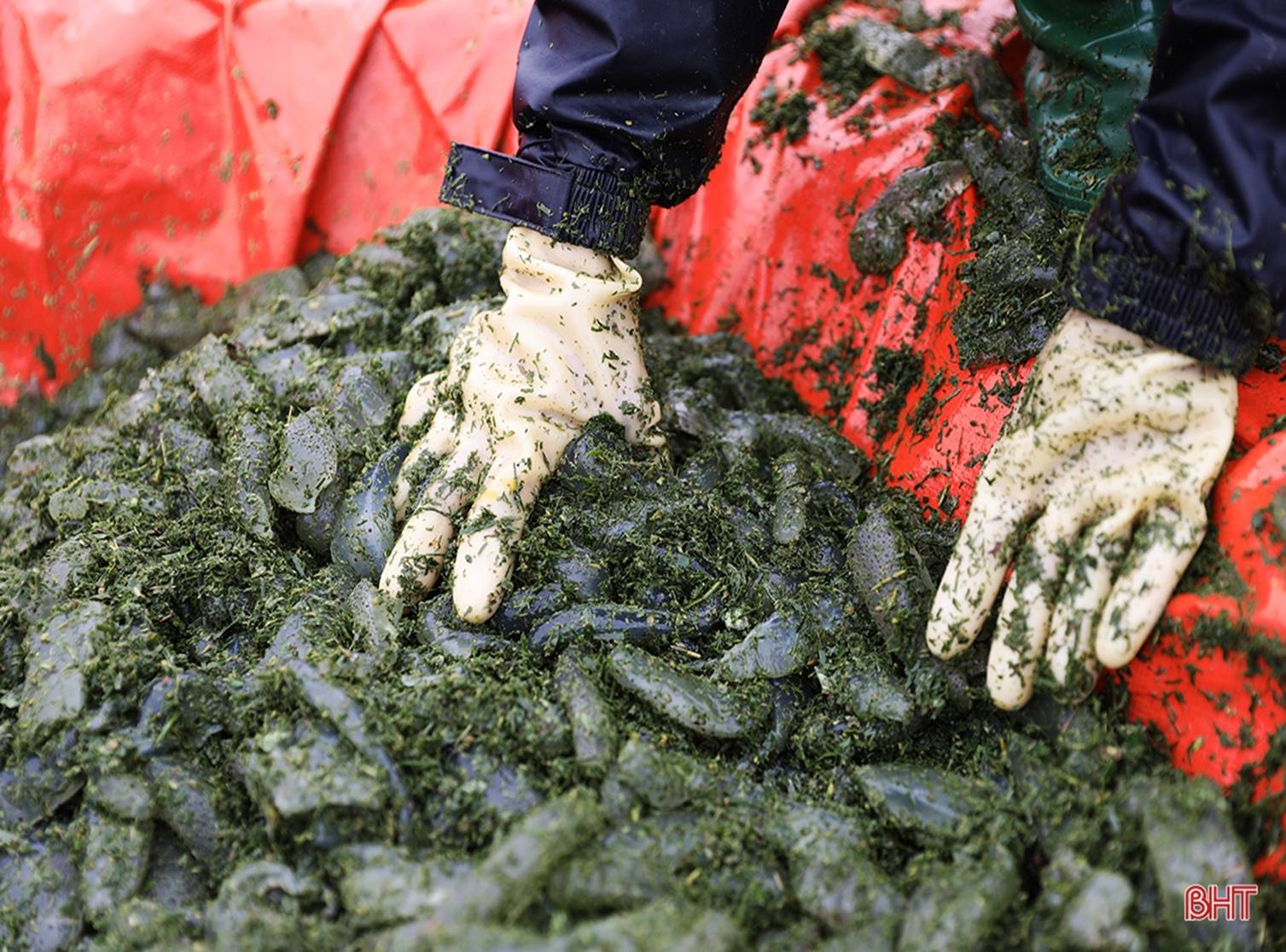
Jellyfish washed with seawater is marinated in lau leaves
It is precisely because the process of salting jellyfish is so complex and time-consuming, and because the jellyfish also shrinks and loses about 80-90% of its original weight, that the finished product is so much more expensive. In Ha Tinh, the price of salted jellyfish ranges from 90 to 150 thousand VND/kg.
Salted jellyfish can be used to make salads, wrapped in tia to or kinh gioi leaves and eaten raw, cooked in vermicelli or soup, depending on each family’s taste.
In Eastern medicine, jellyfish meat has a salty, cold taste and is used to clear phlegm, relieve coughs, and cool the body down. It also helps to detoxify the liver and kidneys and is good for those with a history of intestinal problems, stomach ulcers, and high blood pressure. That is why jellyfish is used as both a food and a medicine.
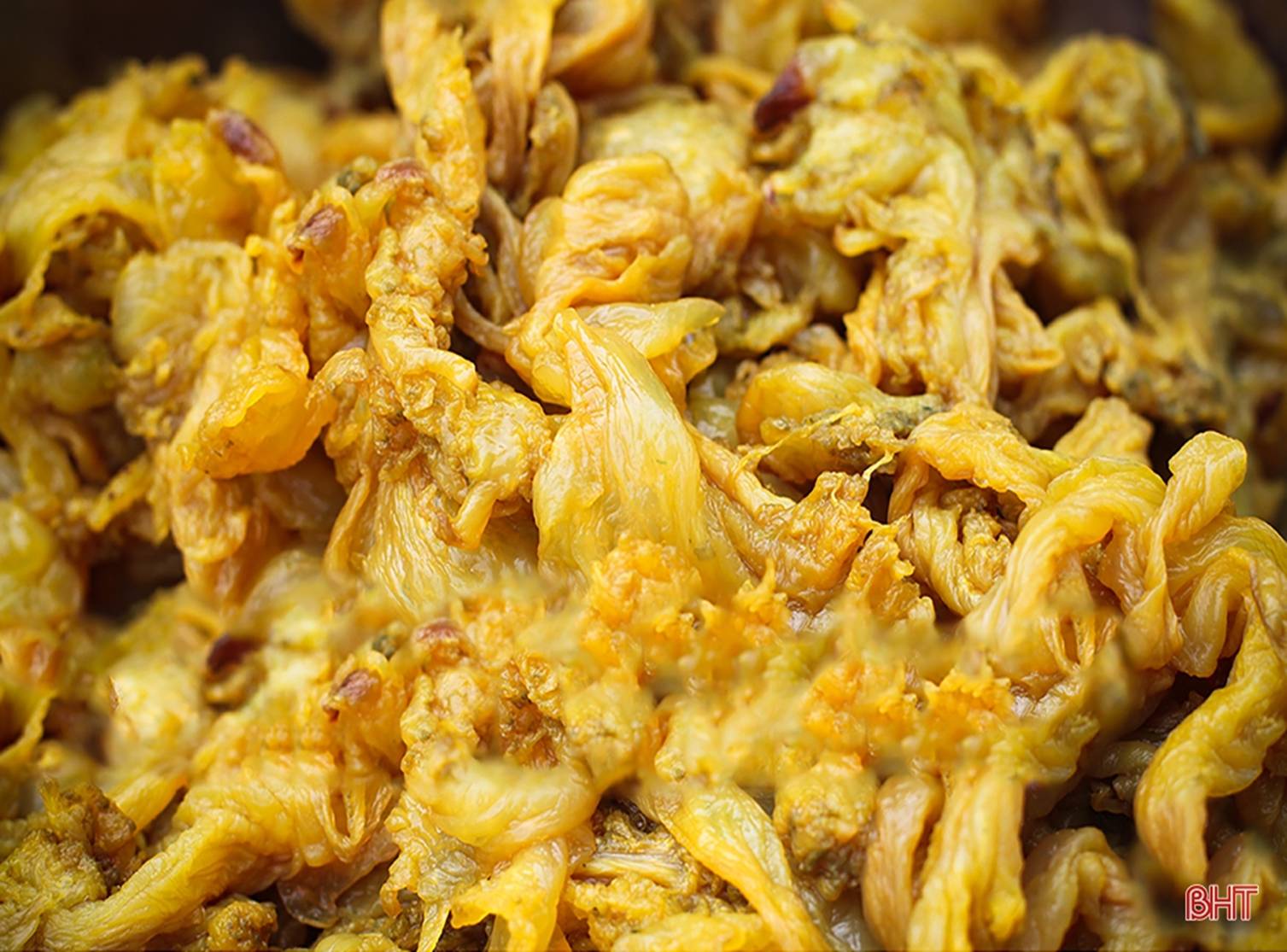
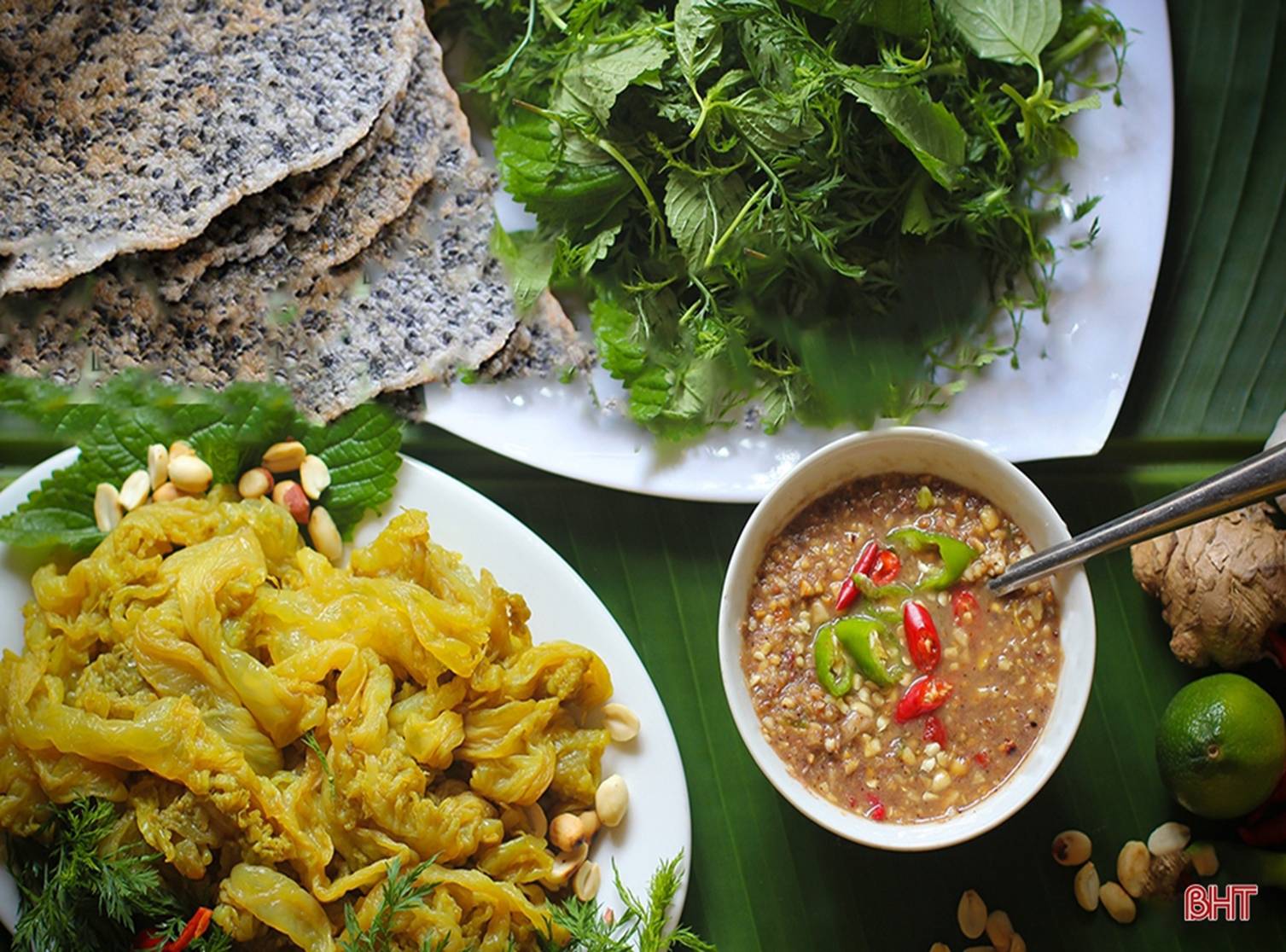
In order to make a delicious dish from jellyfish, it turns out that there are more complex steps involved than we thought. If we didn’t know the function of sea sand in the jellyfish processing process, we might think that the fishermen are not ensuring food safety and hygiene. But now that we know, we can see that the experience passed down through generations actually contains profound folk wisdom.
According to doisongphapluat.nguoiduatin.vn






































